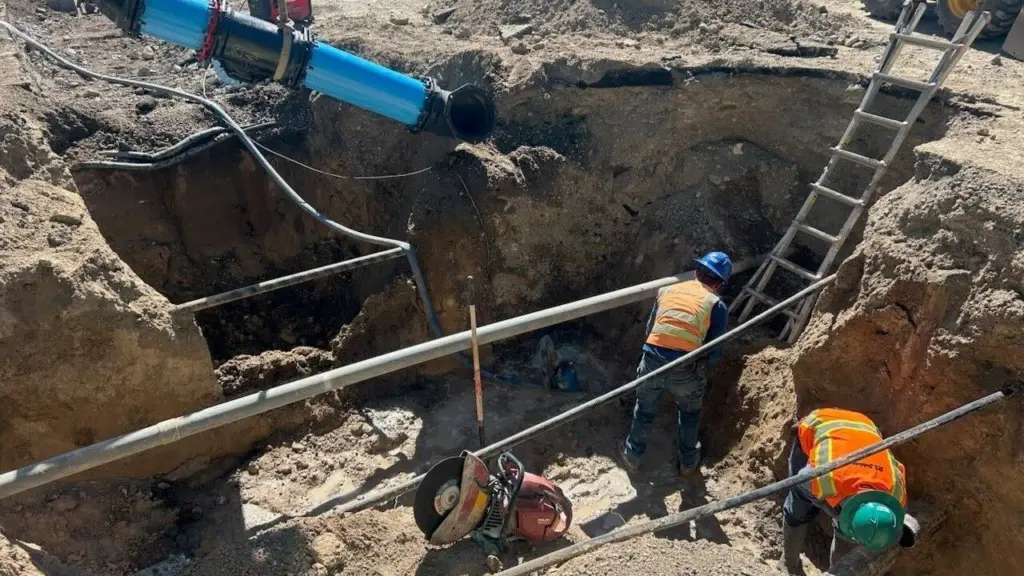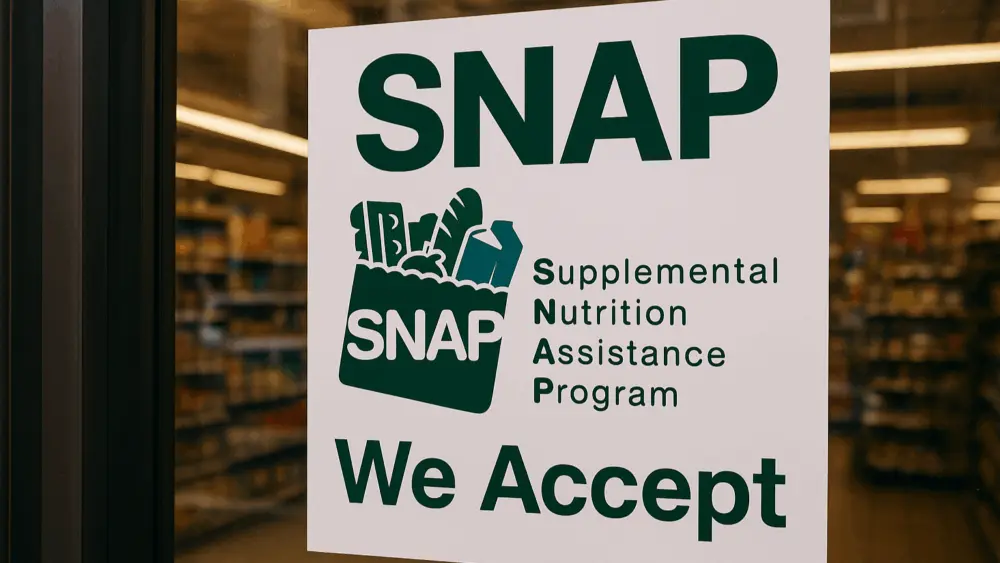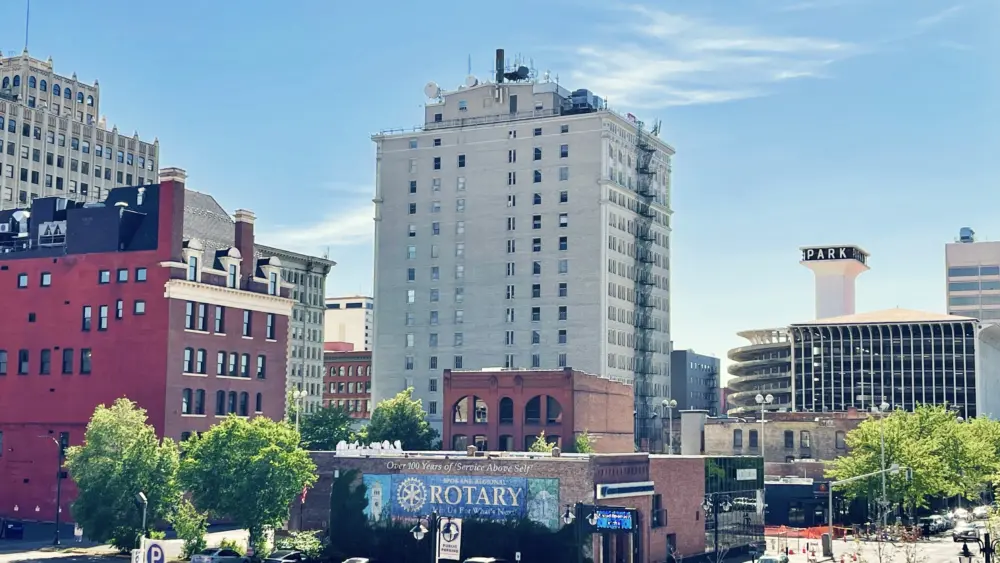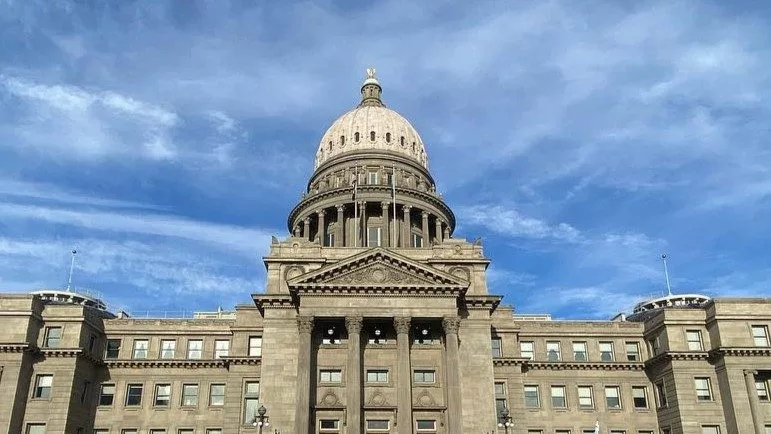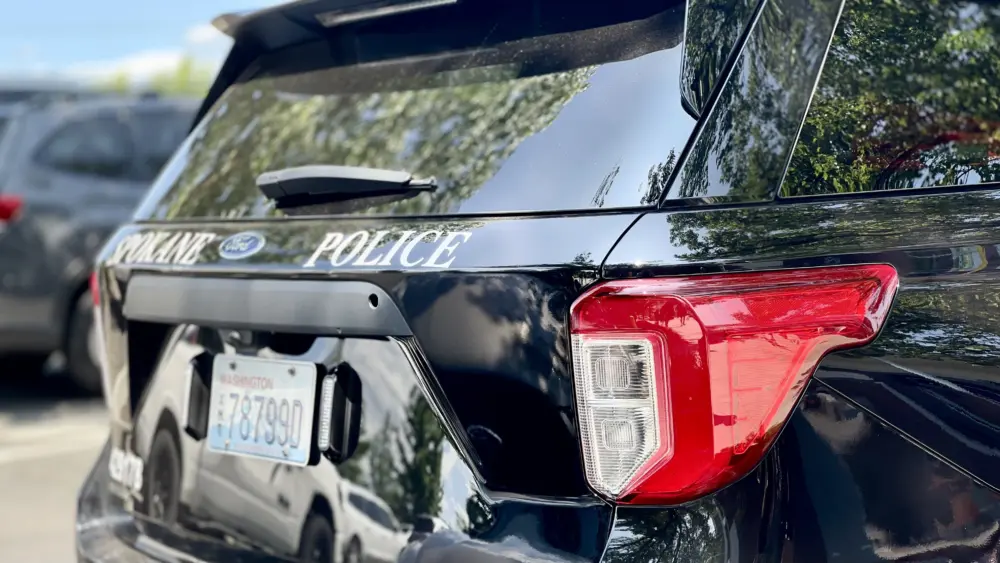BOISE, ID – In McCammon, local officials aren’t even sure how old the water pipes are.
But some sections could go back to the 1940s, said City Council President Aaron Hunsaker.
So, the rural eastern Idaho town started $3 million of work to replace pipes that funnel drinking water from a nearby spring. But at the same time, McCammon is replacing a well, prompting watering restrictions, shutoffs and temporary boil orders in parts of the less than 1,000-population town.
Hunsaker said he hasn’t heard many complaints from the community, who he thinks recognize that the work needs to be done. But he knows it’s been hard.
“With our water shut off, I think nobody has liked it,” Hunsaker told the Idaho Capital Sun. “Our school has to shut down each time we do it, because of the risk of a boil order.”
McCammon isn’t alone.
Across Idaho, communities need more than $1 billion to work on infrastructure for wastewater and drinking water this year, a recent study by the University of Idaho McClure Center for Public Policy Research found. A small fraction have secured funding.
“This is funding that’s needed to bring systems up to a level where they’re functioning now and going forward,” said Liz Bageant, the lead economist on the study.
But tackling those needs could get harder, as Congress considers President Donald Trump’s proposal to nearly entirely defund a federal program that funds low-interest grants for local governments to finance water infrastructure projects.
Infrastructure report card graded Idaho’s water systems at a C+
Idaho’s needs are driven by aging facilities, the state’s fast population growth, and environmental regulations, the U of I study found. But across the U.S., communities have high needs for water infrastructure, Bageant said.
The issue is especially acute in smaller communities, like McCammon, which have less people to spread the tax burden over. That’s most of Idaho, Bageant said.
Most of Idaho’s water systems are serving small communities, the U of I study found. That means they might need to charge local residents higher fees to pay for one-time projects and maintenance.
“When you have a small number of users, that doesn’t necessarily mean that your upgrade is going to be proportionally cheaper,” Bageant told the Sun. “… And when you do the math for a lot of these small systems, the cost is just too high for your community to bear.”
Earlier this month, the American Society of Civil Engineers’ Idaho section released the state’s latest infrastructure report card, grading Idaho’s infrastructure the same as the nation’s overall: C. That meant the state’s infrastructure was holding up, but is aging and stressed.
The state’s drinking water and wastewater infrastructure systems scored higher, at a C+.
Idaho’s public water systems provide safe drinking water, but they “face mounting challenges from aging infrastructure, limited funding, and climate pressures,” the report found.
In 2023, more than half of Idaho’s wastewater treatment plants reported violations of the federal Clean Water Act, which were “often tied to aging equipment and capacity issues,” the report found.
Predictable funding could help both systems, the report said:
- For drinking water, stable access to funds could help. “Long term, predictable access to federal and state infrastructure funding, paired with locally sustainable rate structures, allows utilities to recover full lifecycle costs, reduce deferred maintenance, and invest in needed upgrades while maintaining affordability.”
- For wastewater, creating a dedicated state infrastructure fund “could help smaller and rural communities access consistent, matchable funding to replace aging infrastructure and comply with regulatory requirements.”
In McCammon, the city’s ongoing water projects totalled roughly six to seven million million dollars between replacing a well, water lines, and addressing other local water issues, Hunsaker said. The city’s operating budget each year is usually less than $1 million, he said.
The projects are mostly funded by federal loans and grants, and raises to local water rates.
“It is a challenge for a rural community like our size because a million dollars for a well — it doesn’t matter if we’re a town of 1,000 people or the city of Pocatello,” Hunsaker said. “The cost is still the same. But we have fewer users that we can share that cost with.”
What’s happening in McCammon “is happening in so many towns across Idaho,” said Idaho Rural Water Association CEO Shelley Roberts.
Wells are going out, and aquifers with dropping water levels are forcing communities to dig deeper wells, she said.
Because water infrastructure work is expensive, local governments often delay, which can lead to more issues down the road, she said.
“Projects are becoming more expensive, so then the project even becomes more unaffordable,” Roberts told the Sun.
Trump proposed nearly eliminating key federal water infrastructure fund
Water infrastructure projects are largely funded through the federal government, mostly through low-interest loans and occasional smaller grants, Roberts said.
But Congress is debating cutting a key source of federal funding: the U.S. Environmental Protection Agency’s Clean Water and Drinking Water revolving funds. In the president’s budget proposal, Trump sought to nearly eliminate the funds, but U.S. House Republicans’ plan in July called to scale back the fund by $662 million, down to $2.1 billion, E&E News reported.
The final pool of funds was already getting smaller in recent years, as Congress decided to set aside funds for specific communities — a practice called earmarking.
It isn’t clear how federal funds for water projects might change, said Association of Idaho Cities Executive Director Kelley Packer.
“We’re very, very nervous that there will be a reduction,” she said.
The Idaho Department of Environmental Quality, which distributes the federal funds for water project loans, didn’t weigh in on how impactful the federal cuts could be.
“Congress is still working through the appropriation process, including determining earmarks, and final levels … have not yet been determined,” agency spokesperson Anna Marron told the Sun in a written statement.
An earlier draft of the agency’s written responses, shared with the Sun, discussed the proposed cuts at length.
The Idaho Department of Environmental Quality canceled a scheduled interview with the Sun about changes to federal funding, requesting emailed questions instead. Asked about the change, Marron said “given the technical nature of these topics, and after discussing it with (the agency’s) director and the Governor’s Office, a written response was a better method of communicating our answers.”
Idaho recently boosted state investments in water. But now, revenues are down.
Historically, the state of Idaho’s main role in funding water projects has been through matches to grants that fund the federal government’s funds for loans, Roberts said. But in recent years, Idaho has invested more — through allocating federal COVID-related funds and state general funds.
In fiscal year 2023, the Legislature appropriated $300 million from funds from the American Rescue Plan Act, which were federal COVID-relief funds, for water infrastructure, Marron said. Then in fiscal year 2024, the Legislature set aside another $23 million from the federal COVID fund and $92 million from the state’s general fund for water projects, she said.
It isn’t clear how the state would fund water projects next year.
Idaho Gov. Brad Little’s state budget chief last week told state agency directors to permanently extend budget cuts the governor ordered for this year.
Since Little ordered 3% midyear budget cuts in response to an $80 million projected budget shortfall, the state’s budget outlook improved slightly.
This month, the Legislative Services Office projected the state was on track to end the current fiscal year next June with a $21.8 million budget surplus, the Sun reported.
But revenues were still lower than expected, and the budget projection still didn’t account for tax cuts in President Trump’s One Big Beautiful Bill Act, which could cost Idaho another $167 million to implement.
A week before the latest budget projection came out, Packer with the Association of Idaho Cities said until the Legislature meets, the state’s future water investments won’t be clear.
“We hope the state revenues start to trend up, so that there’s more likelihood of them investing,” she said. “And then we will just do our work in trying to continue to educate them on the need and encourage their investments.”
This story first appeared on Idaho Capital Sun.

